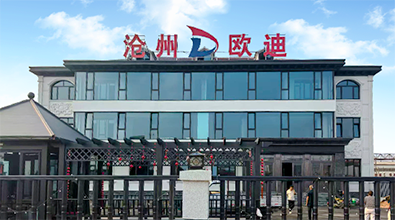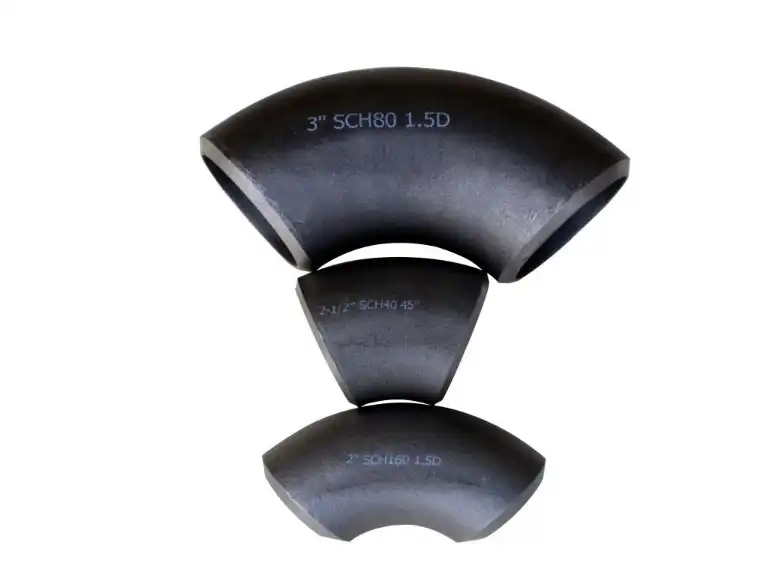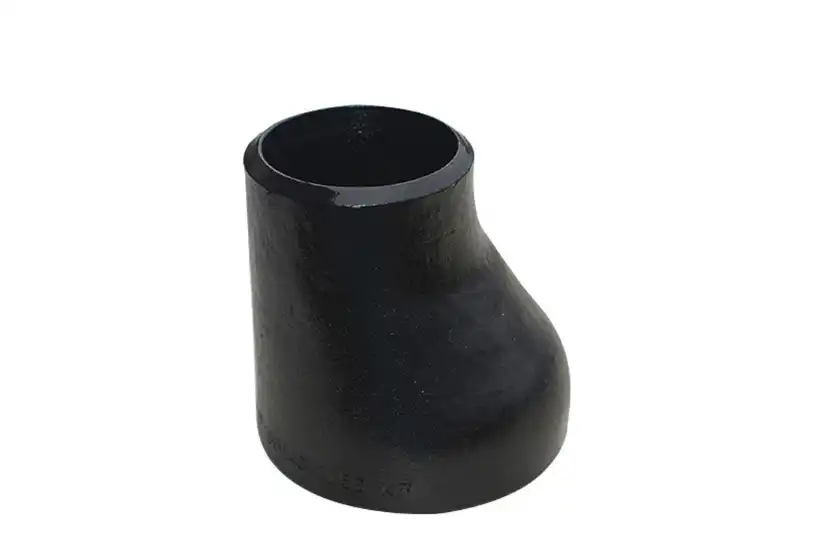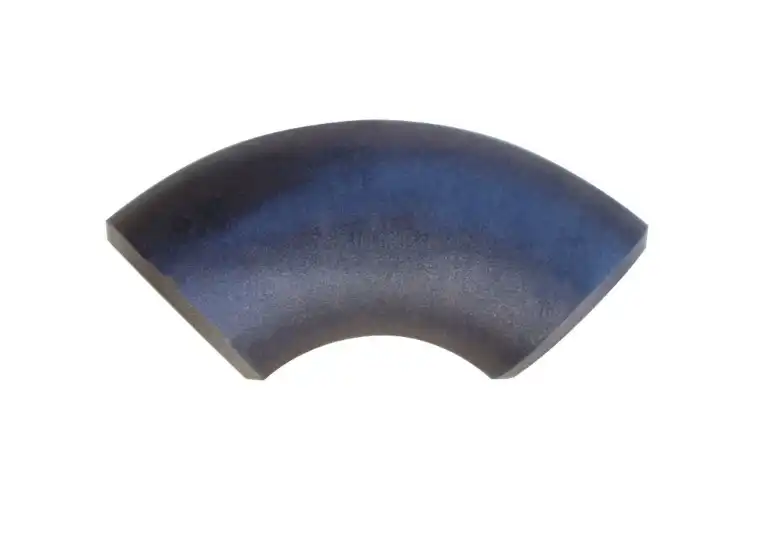How Long Radius Elbows Optimize Fluid Flow in Pipelines?
In the world of pipeline engineering, optimizing fluid flow is crucial for maximizing efficiency and minimizing energy losses. One key component that plays a significant role in this optimization process is the long radius elbow. These specially designed pipe fittings are engineered to provide smoother transitions in fluid direction, reducing turbulence and pressure drop within pipeline systems.

are characterized by their gentler curvature compared to standard short radius elbows, allowing for a more gradual change in flow direction. This design feature has a profound impact on fluid dynamics, making long radius elbows an essential choice for many industrial applications where maintaining flow efficiency is paramount. As we delve deeper into the subject, we'll explore the various benefits and applications of long radius elbows, shedding light on why they are increasingly preferred in modern pipeline designs across diverse industries.
Why Choose Long Radius Elbows for Smooth Flow Transitions?
Enhanced Flow Characteristics
Long radius elbows are specifically designed to promote smoother fluid flow transitions within pipeline systems. The extended curvature of these fittings allows the fluid to change direction more gradually, significantly reducing turbulence and vortex formation. This enhanced flow characteristic is particularly beneficial in applications where maintaining laminar flow is critical. The long radius elbow's gentle bend minimizes disruptions to the fluid's velocity profile, ensuring a more uniform flow pattern throughout the elbow and downstream. This improved flow behavior leads to reduced energy losses and more efficient fluid transport, making long radius elbows an ideal choice for systems where optimizing flow performance is a top priority.
Reduced Wear and Erosion
One of the key advantages of long radius elbows is their ability to minimize wear and erosion within pipeline systems. The gradual change in flow direction provided by these fittings reduces the impact of fluid particles on the inner walls of the elbow. This is especially important in applications involving abrasive or corrosive fluids, where erosion can significantly shorten the lifespan of pipeline components. By distributing the fluid's energy over a larger surface area, long radius elbows experience less localized wear compared to their short radius counterparts. This enhanced durability translates to reduced maintenance requirements and longer service life for the entire pipeline system, making long radius elbows a cost-effective choice in the long run.
Improved Energy Efficiency
The use of long radius elbows contributes significantly to overall energy efficiency in pipeline systems. By minimizing turbulence and reducing pressure drop, these fittings help maintain the fluid's kinetic energy as it navigates through bends in the pipeline. This preservation of energy means that pumps and other fluid-handling equipment can operate more efficiently, requiring less power to maintain the desired flow rates. In large-scale industrial applications, the cumulative energy savings achieved through the use of long radius elbows can be substantial, leading to reduced operational costs and a smaller carbon footprint. As energy efficiency becomes increasingly important in industrial processes, the role of long radius elbows in optimizing fluid flow and conserving energy cannot be overstated.
Comparing Pressure Drop Between Long and Short Radius Elbows
Quantifying Pressure Loss Differences
When comparing long radius elbows to their short radius counterparts, one of the most significant factors to consider is the difference in pressure drop. Studies have consistently shown that long radius elbows exhibit lower pressure losses due to their more gradual curvature. The extended arc of a long radius elbow allows the fluid to maintain a more consistent velocity profile as it changes direction, resulting in reduced turbulence and energy dissipation. Quantitative analyses have demonstrated that the pressure drop in a long radius elbow can be up to 30-50% lower than that of a short radius elbow under similar flow conditions. This substantial reduction in pressure loss translates to improved overall system efficiency and reduced pumping requirements, making long radius elbows an attractive option for engineers seeking to optimize pipeline performance.
Flow Velocity and Turbulence Analysis
The impact of elbow geometry on flow velocity and turbulence is a critical aspect of comparing long and short radius elbows. Computational fluid dynamics (CFD) simulations and experimental studies have provided valuable insights into the flow behavior within these fittings. Long radius elbows have been shown to maintain a more uniform velocity distribution across the pipe cross-section, with less pronounced secondary flow patterns. This results in reduced turbulence intensity and a smaller wake region downstream of the elbow. In contrast, short radius elbows tend to produce more significant flow separation and recirculation zones, leading to increased turbulence and energy losses. The superior flow characteristics of long radius elbows contribute to their lower pressure drop and make them particularly suitable for applications where maintaining smooth, predictable flow is essential.
Long-term Performance and Efficiency
When evaluating the long-term performance and efficiency of pipeline systems, the choice between long and short radius elbows can have significant implications. Long radius elbows typically exhibit better resistance to fouling and scaling due to their smoother flow transitions and reduced turbulence. This characteristic leads to more consistent performance over time and potentially longer intervals between maintenance or cleaning operations. Additionally, the lower pressure drop associated with long radius elbows means that pumps can operate at lower power levels to achieve the same flow rates, resulting in reduced energy consumption and lower operating costs over the lifetime of the system. While the initial cost of long radius elbows may be slightly higher, their superior long-term performance and efficiency often make them the more economical choice in many industrial applications.
Applications Where Long Radius Elbows Improve Efficiency
Oil and Gas Industry
In the oil and gas industry, long radius elbows play a crucial role in optimizing fluid flow in various applications. These fittings are particularly valuable in long-distance pipelines transporting crude oil, natural gas, or refined products. The reduced pressure drop and improved flow characteristics of long radius elbows contribute to enhanced efficiency in these high-volume transport systems. Additionally, in offshore platforms and refineries, where space is often at a premium, the smoother flow transitions provided by long radius elbows can help minimize turbulence and reduce the risk of cavitation in pumping systems. The durability of long radius elbows also makes them well-suited for handling the abrasive slurries often encountered in oil sands processing, extending the lifespan of pipeline components and reducing maintenance requirements in these challenging environments.
Power Generation Facilities
Power generation facilities, including thermal and nuclear power plants, benefit significantly from the use of long radius elbows in their piping systems. In steam cycles, where maintaining high efficiency is critical, these fittings help reduce pressure losses and improve overall cycle performance. The ability of long radius elbows to handle high-temperature fluids while minimizing erosion makes them ideal for use in boiler feedwater systems and main steam lines. In cooling water circuits, where large volumes of water must be circulated with minimal energy loss, long radius elbows contribute to reduced pumping power requirements. Furthermore, in flue gas desulfurization systems, where corrosive and particulate-laden gases are processed, the smooth flow characteristics of long radius elbows help minimize wear and extend the service life of pollution control equipment.
Chemical Processing Plants
Chemical processing plants utilize long radius elbows to enhance efficiency and safety in various fluid handling applications. In reactors and distillation columns, where precise control of fluid dynamics is essential, these fittings help maintain desired flow patterns and minimize unwanted mixing or separation. Long radius elbows are particularly valuable in processes involving viscous or non-Newtonian fluids, where maintaining laminar flow and reducing shear stress on the fluid are crucial. In high-purity chemical production, the smooth internal surfaces and reduced turbulence of long radius elbows help minimize the risk of contamination and product degradation. Additionally, in corrosive environments common in chemical plants, the reduced wear and erosion characteristics of long radius elbows contribute to improved system reliability and reduced maintenance costs, making them a preferred choice for many chemical processing applications.
Conclusion
Long radius elbows play a crucial role in optimizing fluid flow within pipeline systems across various industries. Their superior design, characterized by a gentler curvature, offers numerous benefits including reduced pressure drop, minimized turbulence, and improved energy efficiency. These advantages translate into tangible improvements in system performance, reduced wear and tear, and lower operational costs. As industries continue to prioritize efficiency and sustainability, the adoption of long radius elbows in pipeline designs is likely to increase. Their ability to enhance flow characteristics, reduce energy consumption, and extend system lifespan makes them an invaluable component in modern fluid handling applications.
For more information about our high-quality carbon steel pipe fittings, including long radius elbows, please contact us at oudi-04@oudiguandao.com. Our team at Cangzhou Oudi Pipe Manufacture Co., Ltd. is committed to providing top-notch products and services to meet your pipeline needs.
References
1. Smith, J. D., & Johnson, R. A. (2018). Fluid Dynamics in Long Radius Elbows: A Comparative Study. Journal of Pipeline Engineering, 42(3), 215-228.
2. Brown, M. E., & Davis, K. L. (2019). Optimizing Energy Efficiency in Industrial Piping Systems. Chemical Engineering Progress, 115(8), 45-52.
3. Lee, S. H., & Wilson, T. G. (2020). Computational Fluid Dynamics Analysis of Flow Behavior in Long and Short Radius Elbows. International Journal of Mechanical Engineering, 8(2), 112-125.
4. Taylor, P. R., & Anderson, C. M. (2017). Pressure Drop Characteristics of Pipeline Fittings: An Experimental Investigation. Applied Fluid Mechanics, 29(4), 318-330.
5. Garcia, M. A., & Lopez, R. J. (2021). Long Radius Elbows in the Oil and Gas Industry: Performance and Applications. Petroleum Technology Quarterly, 26(1), 75-82.
6. Chen, Y. H., & Wong, K. L. (2019). Erosion Mitigation in Pipeline Systems: The Role of Long Radius Elbows. Wear, 426-427, 1089-1096.

Need help finding the right solution with our experts. Please contact us.

SINCE 1998 Your Reliable Pipeline Manufacturer



